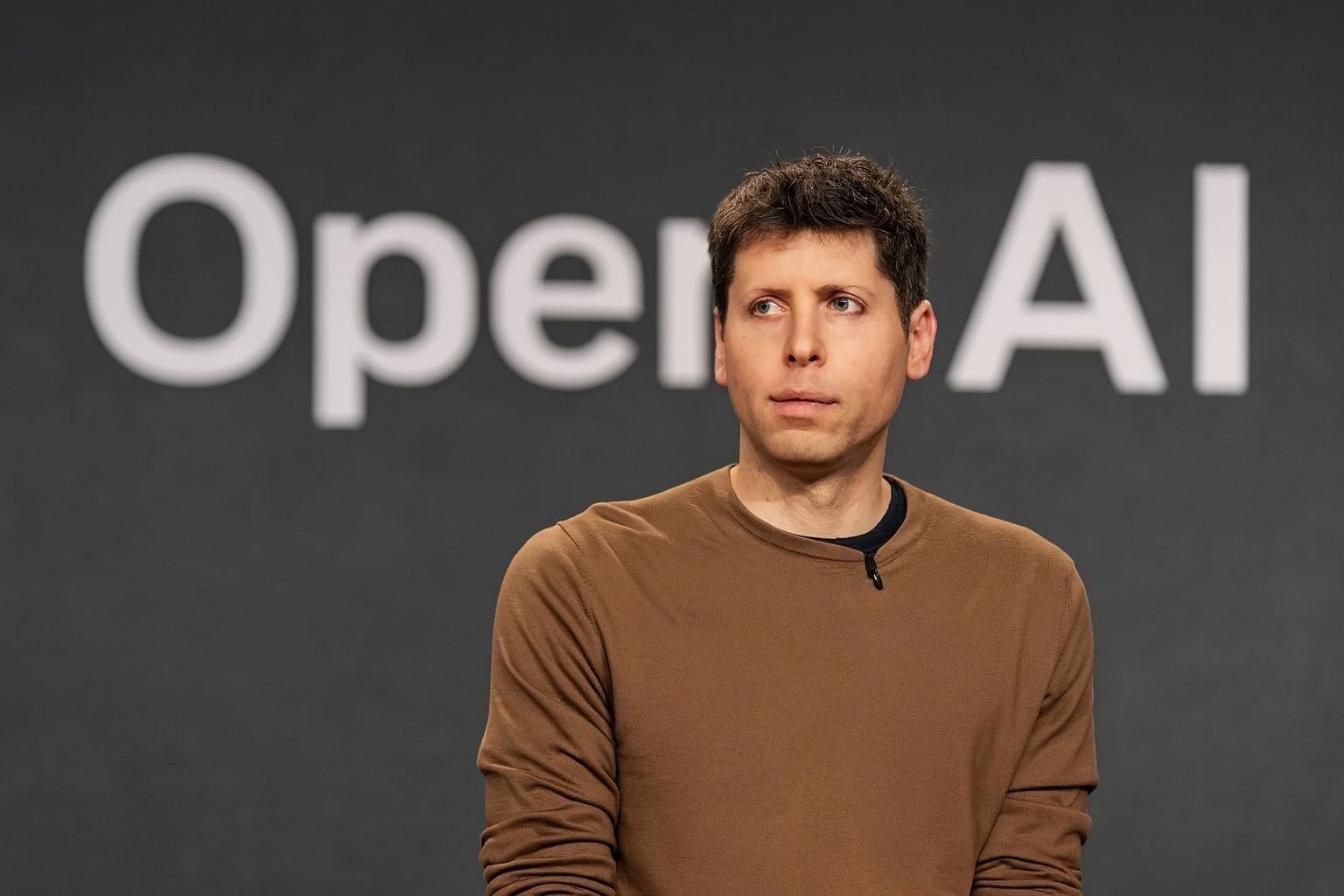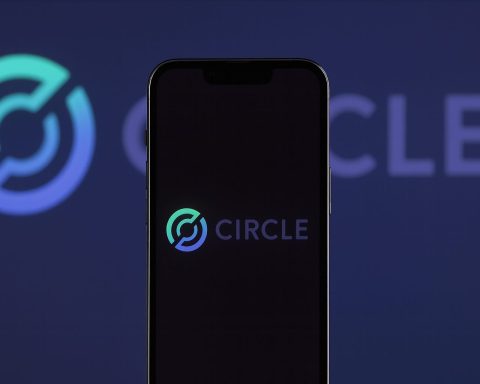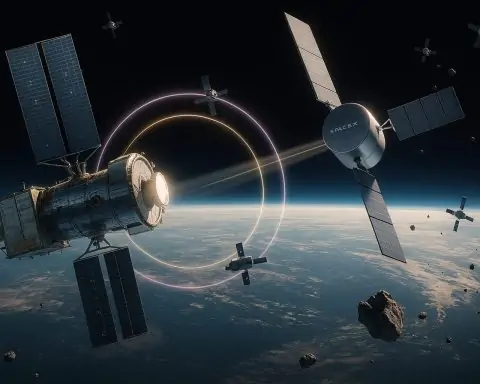As of November 25, 2025, OpenAI’s last official funding deal values the company at $500 billion, while secondary markets, SoftBank’s stake and IPO chatter push implied valuations as high as $750 billion and even $1 trillion. Here’s what the latest news and data say.
Snapshot: What OpenAI Is “Worth” Today
If you need one headline number for today, November 25, 2025, the clearest answer is:
OpenAI’s latest official valuation is approximately $500 billion, set by an October 2025 secondary share sale.
But that’s only the starting point. Since then:
- Secondary-market data providers say OpenAI shares are trading at a premium of roughly 20% above that tender price, implying a value of around $600 billion. [1]
- A Reuters Breakingviews analysis of SoftBank’s stock price suggests public investors may be implicitly valuing OpenAI at around $750 billion, after stripping out SoftBank’s other holdings and applying a typical holding-company discount. [2]
- Banks and commentators discussing a potential IPO in 2026–27 say OpenAI could target up to a $1 trillion valuation if market conditions cooperate. [3]
So on November 25, 2025, a realistic way to describe the situation is:
- “Last priced” valuation: about $500B (hard transaction data)
- Private-market / SoftBank-implied range: roughly $600B–$750B (market-derived estimates)
- IPO scenario: up to $1T (forward-looking, not yet tested by public markets)
The rest of this article unpacks how we got here, and what today’s news means for those numbers.
The Official Anchor: $500 Billion From October’s Share Sale
On October 2, 2025, OpenAI completed a massive secondary share sale in which current and former employees sold about $6.6 billion worth of stock. A group of investors led by SoftBank bought the shares, and the transaction valued OpenAI at $500 billion. [4]
That deal:
- More than doubled OpenAI’s valuation from the $300 billion level reported earlier in 2025. [5]
- Made OpenAI arguably the world’s most valuable startup, overtaking SpaceX. [6]
- Was widely used by data providers such as Tracxn and others as the “latest valuation” figure — $500B as of late October 2025. [7]
At the same time, OpenAI’s financials were exploding. Reuters, citing The Information, reported that OpenAI generated about $4.3 billion in revenue in the first half of 2025, roughly 16% more than in all of 2024, underscoring how fast monetization was catching up to hype. [8]
From a pure data standpoint, this October 2025 tender offer is the clearest, hard-dollar reference point for OpenAI’s valuation as of today.
How OpenAI’s Valuation Got Here
To understand why $500B might still under- or over-shoot reality, it helps to look at the ramp:
- Early 2023: After ChatGPT’s breakout, OpenAI’s valuation jumped into the tens of billions; one widely cited figure was around $29 billion. [9]
- Late 2023 – early 2024: A tender offer led by Thrive Capital valued OpenAI at $80–86 billion, tripling its value in about ten months. [10]
- October 2024: OpenAI raised $6.6 billion at a valuation of about $157 billion, nearly doubling from the prior tender. [11]
- Spring 2025: A record-setting $40 billion funding round led by SoftBank pushed OpenAI’s valuation to around $300 billion. [12]
- August 2025: Reuters reported that OpenAI was eyeing a $500 billion valuation for an employee share sale — which is exactly where the October tender ultimately landed. [13]
By October 2025, a company that had been worth tens of billions in 2023 had become a $500B AI behemoth in barely two years — and the market is still trying to decide if even that is conservative.
Today’s Estimated Range: $500B–$750B
1. The 500B Baseline
The October 2025 tender is not a hypothetical; investors and employees actually transacted at that price. For many institutional investors, that makes $500B the “anchor” valuation: it’s the last major round with real money behind it. [14]
2. Secondary-Market Premium: Around $600B
However, private markets haven’t stood still. A snippet from valuation firm PM Insights notes that, as of November 10, 2025, OpenAI shares were trading in secondary markets at a 20.35% premium to the tender-offer valuation. [15]
If you apply that premium to the $500B base:
- 500B × 1.2035 ≈ $600B
That doesn’t mean every share changes hands at that price, but it does suggest sophisticated secondary buyers have been willing to pay materially more than the tender level for scarce stock.
3. SoftBank’s Stock Implies ~750B
The most aggressive estimate comes from SoftBank’s own share price. SoftBank has:
- Invested about $10.8 billion in OpenAI
- Built an 11% stake, buying in first at a $300B valuation and later at the $500B price tag
- Committed another $22.5 billion in future funding for the company [16]
Reuters Breakingviews took SoftBank’s market cap, subtracted the value of its other holdings (Arm, T‑Mobile US, and various Vision Fund assets), applied a typical 30% holding-company discount, and backed into what the market is implicitly paying for its OpenAI stake. The result:
Investors are effectively valuing OpenAI at around $756 billion — roughly 50% above the $500B tender. [17]
That same analysis cites secondary trades around $600B, which nicely bracket the PM Insights premium. [18]
4. Alternative Data Signals
Private-markets data platform Notice shows an algorithmic “market cap” for OpenAI of about $541 billion, based on secondary-market activity and comparable companies. However, that mark is as of May 2025, before the October tender, so it’s best read as context rather than a current price. [19]
Meanwhile, industry trackers like Tracxn and PitchBook continue to list $500B as OpenAI’s latest formal valuation, echoing the tender figure in their databases. [20]
Put together, the best-supported range on November 25, 2025 is:
- Floor / last deal: $500B
- Secondary-market consensus: ~$600B
- SoftBank-implied bull case: ~$750B
The $1 Trillion Question: IPO Chatter and Forward-Looking Hype
On October 30, 2025, Reuters reported that OpenAI is laying the groundwork for an IPO as early as the second half of 2026. In early discussions with banks, the company has reportedly floated a valuation of up to $1 trillion, alongside a potential capital raise of at least $60 billion. [21]
Other outlets, including The Economic Times and 24/7 Wall St, have echoed that range, describing a prospective “ChatGPT IPO” targeting up to $1 trillion depending on market conditions. [22]
Important nuance:
- This $1T number is aspirational, not a present valuation.
- It’s a negotiation starting point between OpenAI, banks, and the future public market.
- Any eventual IPO price will depend on revenue growth, competition, profitability, interest rates, and overall tech sentiment at the time of listing.
So you can think of $1T as the ceiling of current hopes — not the price anyone is paying today.
What Changed on November 25, 2025?
There is no new funding round today that resets OpenAI’s headline valuation. Instead, fresh news is reshaping how investors feel about that $500B–$750B range.
1. Revenue & Capex: $20B ARR and a $1.4T Infrastructure Bet
A widely read piece on The Tech Buzz, updated November 25, 2025, reports that CEO Sam Altman expects OpenAI to end 2025 above $20 billion in annualized revenue (ARR) and has committed to roughly $1.4 trillion in data-center infrastructure over the next eight years — about $175 billion per year. [23]
Earlier analyses from CEOWorld outlined OpenAI’s trajectory from about $4 billion in annualized revenue in late 2024 to around $12 billion by mid‑2025, indicating an extremely steep revenue ramp. [24]
Taken together:
- Revenue estimates for 2025 now cluster between $12B and $20B+. [25]
- OpenAI is simultaneously planning unprecedented infrastructure spending that rivals or exceeds Big Tech cloud providers.
That combination can justify a very high valuation — but it also creates huge execution and financing risk.
2. SoftBank’s Slump: A Sentiment Shock Around OpenAI
Today’s markets are also reacting to OpenAI through SoftBank’s share price:
- Bloomberg reports that SoftBank shares fell as much as 11% today, following a similar drop before Japan’s long weekend, leaving the stock at a 2½‑month low. The trigger: worries that Alphabet’s latest Gemini AI model could intensify competition for OpenAI, SoftBank’s key private bet. [26]
- Investing.com notes growing concern over SoftBank’s heavy exposure to OpenAI, as investors question whether current AI valuations can be sustained if rivals start catching up. [27]
- Forbes estimates that Masayoshi Son’s personal fortune has dropped by nearly $5 billion during this selloff. [28]
At the same time, SoftBank has been doubling down on OpenAI:
- It sold its stake in Nvidia for about $5.8B to free capital for OpenAI investments, according to The Guardian. [29]
- Reuters reports SoftBank plans to invest $3B in an Ohio factory tied to an OpenAI data center, highlighting how much of its strategy now revolves around OpenAI’s success. [30]
The net effect on valuation sentiment: OpenAI is starting to look “too big to fail” not just for employees and early investors, but for massive public companies like SoftBank as well — which magnifies both upside and downside.
3. Skeptics Get Louder
A new GQG Partners whitepaper, covered by InvestorDaily today, argues that OpenAI’s business economics may threaten its long-term viability, pointing to soaring compute costs and uncertain margins. [31]
Other commentary:
- Barron’s examines Oracle’s deepening partnership with OpenAI and concludes that only one of several scenarios looks good for Oracle’s stock, implicitly questioning whether OpenAI’s economics can sustain everyone in its ecosystem. [32]
- Sherwood News describes how being tethered to OpenAI exposure has recently hurt several public names, as investors rotate through AI winners and losers. [33]
These pieces don’t assign a precise number to OpenAI’s value, but they push back against the straight-line “to the moon” narrative that would make $1T feel inevitable.
4. New Products & Partnerships That Support the Bull Case
On the other side of the ledger, today also brings more evidence that OpenAI is still expanding its moat:
- The Associated Press reports that OpenAI and Foxconn are partnering to manufacture AI hardware in the United States, including cabling and power systems for new data-center products. [34]
- Business Standard writes that OpenAI and Jony Ive’s first AI hardware device has entered prototyping, with a launch expected in less than two years. [35]
- OpenAI’s own blog announced “shopping research” in ChatGPT on November 24, and outlets like eWeek and Inc picked it up today, positioning ChatGPT as a Black Friday shopping assistant and a broader commerce discovery tool. [36]
These developments hint at new revenue streams in hardware, commerce, and enterprise software — all of which support the idea that OpenAI could eventually grow into the valuations currently being whispered about.
How Rich Is a $500B–$750B Valuation, Really?
To benchmark OpenAI’s price tag:
- Microsoft is worth around $4 trillion and Alphabet about $3.8 trillion as of late November 2025, partly thanks to AI excitement. [37]
- Among private companies, OpenAI’s $500B valuation puts it comfortably ahead of SpaceX and other unicorns, effectively crowning it the world’s most valuable startup. [38]
On a revenue multiple basis, using the numbers discussed above:
- If OpenAI ends 2025 at roughly $20B ARR, then
- $500B implies about 25× revenue
- $750B implies about 37.5× revenue
- $1T implies about 50× revenue
Even for a hyper‑growth software and infrastructure play, those are very aggressive multiples, especially given that Reuters and others estimate OpenAI’s cash burn could rise from $17B in 2026 to nearly $47B in 2028, requiring $50–80B in additional capital. [39]
In other words, the market is already pricing in a future where OpenAI is one of the most profitable and dominant tech platforms in history. Any stumble in execution, regulation, or competition could compress those multiples quickly.
Competition, Regulation and Litigation: The Valuation Risks
Several other threads from recent coverage chip away at the idea of OpenAI as an unassailable monopoly:
- Model competition: Anthropic’s latest funding rounds value it in the hundreds of billions of dollars, and its new Claude Opus 4.5 model reportedly beats both Google and OpenAI on some coding benchmarks. [40]
- Big Tech challengers: Alphabet’s Gemini models are improving fast and already influencing SoftBank and AI‑related stock prices, as seen in today’s market action. [41]
- Regulatory & legal pressure: OpenAI faces mental‑health related litigation and a newly granted temporary restraining order from Cameo over branding in Sora video products — reminders that legal and regulatory risks can affect product rollouts and, ultimately, cash flows. [42]
- Corporate structure complexity: A recent restructuring split OpenAI into a nonprofit OpenAI Foundation and a for‑profit OpenAI Group PBC, with Time reporting that the foundation holds a stake worth about $130B and Microsoft’s share is marked at around $135B for roughly one‑third of the for‑profit arm. [43]
(From those stake numbers, one can infer a for‑profit valuation in the low‑$400B range at the time of the restructuring — but that’s an approximation based on the reported percentages, and predates the October 500B tender.)
All of this feeds into the core valuation debate: is OpenAI the next trillion‑dollar platform, or the world’s most expensive science project?
So, What Is OpenAI Worth on November 25, 2025?
Putting it all together:
- Last hard mark:
- OpenAI’s most recent completed share sale values the company at about $500 billion, as of October 2025. [44]
- Market‑based estimates:
- Forward‑looking scenarios:
- Banking discussions around a potential IPO envision a valuation range that tops out near $1 trillion, contingent on OpenAI’s ability to sustain hyper‑growth and eventually show durable profitability. [47]
If you needed one number for today, the most defensible answer remains:
OpenAI is currently valued at about $500 billion, with credible market indicators suggesting investors are increasingly treating it as a $600–$750 billion company — and some already modeling a path to $1 trillion.
However, today’s news — especially the $20B+ ARR / $1.4T capex combo, SoftBank’s stock slump, and rising competitive and regulatory pressure — underscores that this valuation is far from risk‑free. The higher the number goes, the more the market is betting that OpenAI can execute perfectly across cloud infrastructure, enterprise software, consumer devices, and safety‑critical research all at once.
For now, OpenAI sits in a rarefied zone: officially a $500B private company, informally treated by many as a proto‑trillion‑dollar AI platform — and increasingly, the company upon which a big slice of the global AI trade is riding.
References
1. www.pminsights.com, 2. www.reuters.com, 3. www.reuters.com, 4. www.reuters.com, 5. www.saastr.com, 6. apnews.com, 7. tracxn.com, 8. www.reuters.com, 9. www.saastr.com, 10. www.reuters.com, 11. www.marketingaiinstitute.com, 12. www.saastr.com, 13. www.reuters.com, 14. www.reuters.com, 15. www.pminsights.com, 16. www.reuters.com, 17. www.reuters.com, 18. www.reuters.com, 19. notice.co, 20. tracxn.com, 21. www.reuters.com, 22. m.economictimes.com, 23. www.techbuzz.ai, 24. ceoworld.biz, 25. ceoworld.biz, 26. www.bloomberg.com, 27. www.investing.com, 28. www.forbes.com, 29. www.theguardian.com, 30. www.reuters.com, 31. www.investordaily.com.au, 32. www.barrons.com, 33. sherwood.news, 34. broadbandbreakfast.com, 35. www.business-standard.com, 36. openai.com, 37. apnews.com, 38. apnews.com, 39. www.reuters.com, 40. coincentral.com, 41. www.bloomberg.com, 42. www.tradingview.com, 43. time.com, 44. www.reuters.com, 45. www.pminsights.com, 46. www.reuters.com, 47. www.reuters.com









